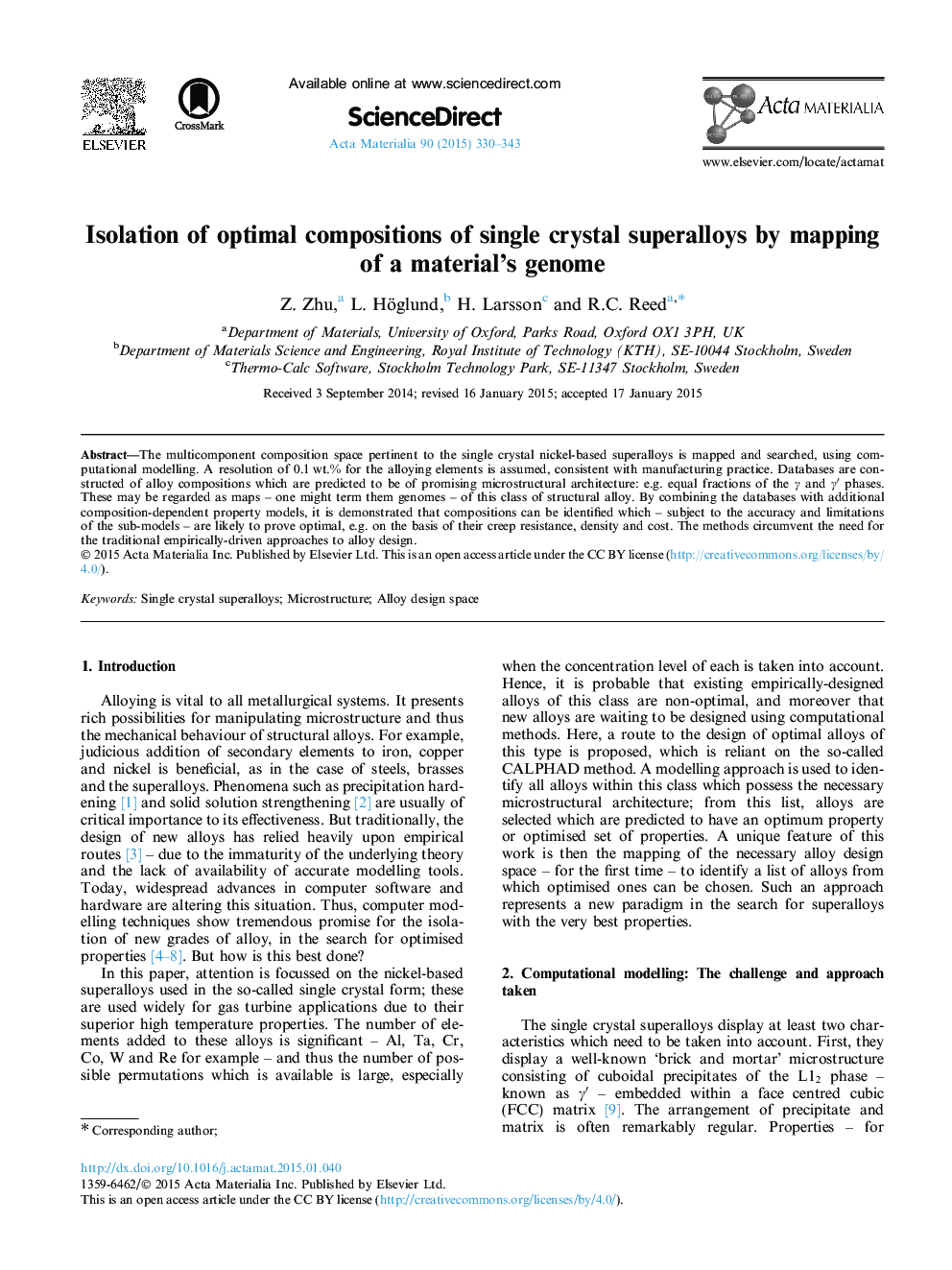| Article ID | Journal | Published Year | Pages | File Type |
|---|---|---|---|---|
| 7880456 | Acta Materialia | 2015 | 14 Pages |
Abstract
The multicomponent composition space pertinent to the single crystal nickel-based superalloys is mapped and searched, using computational modelling. A resolution of 0.1 wt.% for the alloying elements is assumed, consistent with manufacturing practice. Databases are constructed of alloy compositions which are predicted to be of promising microstructural architecture: e.g. equal fractions of the γ and γⲠphases. These may be regarded as maps - one might term them genomes - of this class of structural alloy. By combining the databases with additional composition-dependent property models, it is demonstrated that compositions can be identified which - subject to the accuracy and limitations of the sub-models - are likely to prove optimal, e.g. on the basis of their creep resistance, density and cost. The methods circumvent the need for the traditional empirically-driven approaches to alloy design.
Related Topics
Physical Sciences and Engineering
Materials Science
Ceramics and Composites
Authors
Z. Zhu, L. Höglund, H. Larsson, R.C. Reed,
